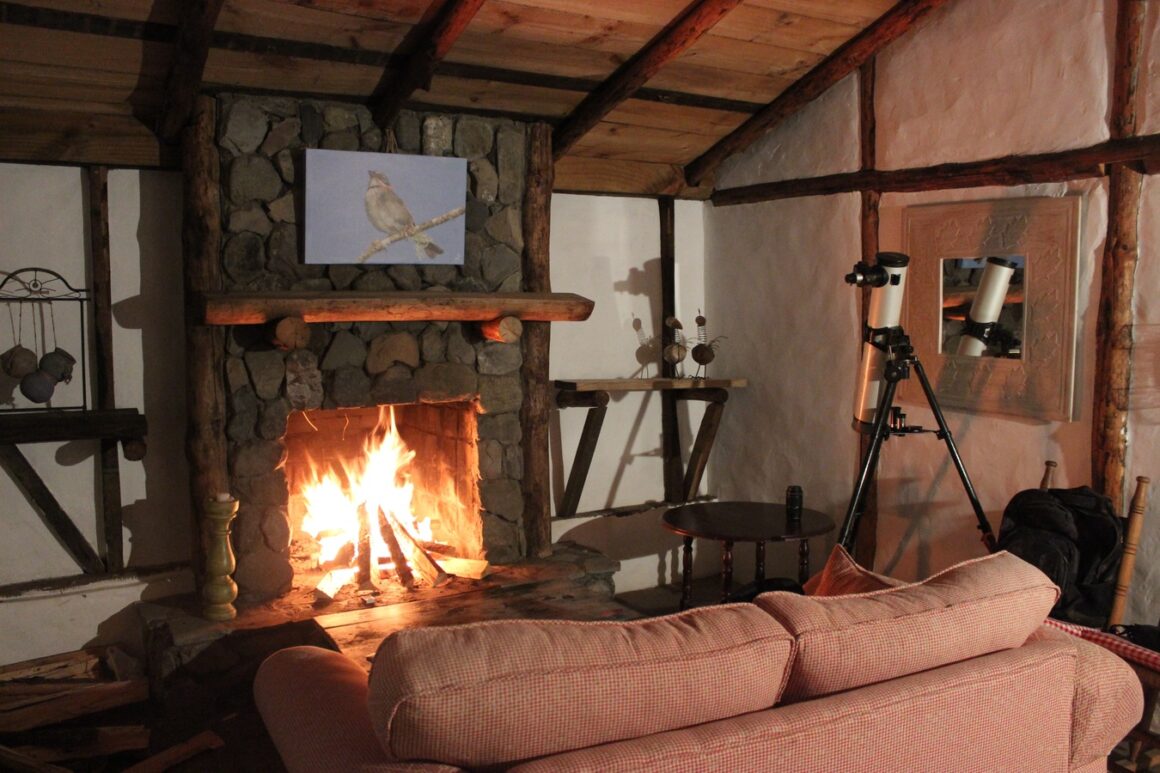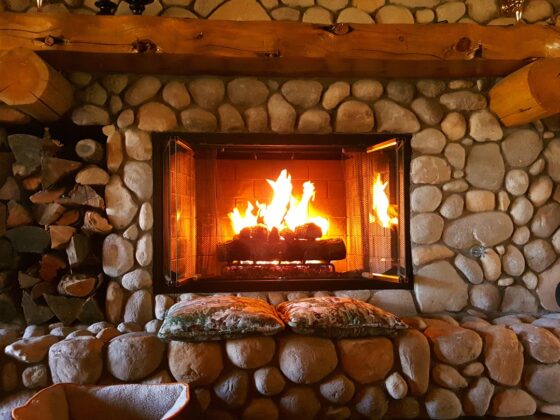Fireplaces have long been a staple of cosy homes, providing warmth and ambience on chilly evenings. But if you’re looking for a more efficient and convenient way to heat your space, a fireplace insert might be just what you need. In this article, we’ll explore what a fireplace insert is and how it works.

What is a Fireplace Insert?
A fireplace insert is a device that is installed into an existing fireplace to improve its efficiency and functionality. It is essentially a fireproof box made of steel or cast iron, which is designed to fit into the opening of a traditional masonry fireplace. The insert contains a combustion chamber, a glass door, and a ventilation system.
Unlike traditional fireplaces, which can lose a significant amount of heat through the chimney, fireplace inserts are designed to maximize heat output and minimize heat loss. They are highly efficient and can help reduce energy costs by providing more heat with less fuel.
There are different types of fireplace inserts available in the market, each with its own advantages and disadvantages. Here are some of the main types of fireplace inserts and how they work:
- Wood-burning inserts: Wood-burning inserts are designed to look like traditional wood-burning stoves but without legs or a pedestal base. They have a metal frame that surrounds the firebox of an existing masonry fireplace and provides insulation from the heat. They also have a grate that holds real or artificial logs that burn slowly and steadily. Wood-burning inserts use natural gas or propane as fuel to create a flame that mimics the look and feel of wood fire. Wood-burning inserts can produce up to 80% more heat than open fireplaces, but they also require regular maintenance, such as cleaning the ashes, checking the flue for blockages, and replenishing the fuel supply.
- Gas inserts: Gas inserts are sealed combustion units that use natural gas as fuel to create a flame that burns hotter and cleaner than wood fire. Gas inserts have two flexible aluminium liners that bring air into the unit for combustion and expel the by-products out of the insert. Gas inserts do not require any chimney or venting system, as they get their air from outside. Gas inserts can produce up to 90% more heat than open fireplaces, but they also require electricity to operate the blower fan that circulates the air around the flames.
- Electric inserts: Electric inserts are plug-in units that use electricity as fuel to create heat from infrared rays or radiant flames. Electric inserts do not have any combustion process or flame at all, so they do not produce any smoke or ash. Electric inserts can produce up to 50% more heat than open fireplaces, but they also consume more electricity than gas or wood fires.
Choosing the right type of fireplace insert for your home depends on several factors, such as your budget, your existing fireplace structure, your preferred style and ambience, your climate conditions, and your personal preferences. You should consult with a professional installer before making any decision regarding your fireplace insert installation.
How Does a Fireplace Insert Work?
When you light a fire in a fireplace insert, the combustion chamber allows for controlled airflow and efficient burning of the fuel. The glass door helps to trap the heat inside the insert and radiate it into the room, while the ventilation system ensures that smoke and gases are safely vented outside.
Most fireplace inserts are fueled by wood, gas, or pellets. Wood-burning inserts use logs or wood pellets as fuel, while gas inserts are connected to a gas line and can be ignited with the flip of a switch. Pellet inserts burn compressed wood pellets, which are automatically fed into the combustion chamber.
One of the main advantages of a fireplace insert is its ability to distribute heat more evenly throughout the room. Many inserts are equipped with fans or blowers that help circulate warm air into the surrounding space. This means that you can enjoy the cosy warmth of a fire without having to sit right next to the fireplace.
Benefits of Using a Fireplace Insert
There are several benefits to using a fireplace insert:
- Increased efficiency: Fireplace inserts are much more efficient than traditional fireplaces, as they are designed to generate more heat with less fuel. This can help reduce your heating costs and save energy.
- Improved safety: Fireplace inserts are built with safety in mind. The glass door helps to prevent sparks and embers from escaping, reducing the risk of fire hazards. The ventilation system also ensures that smoke and gases are properly vented outside.
- Enhanced ambience: While fireplace inserts are known for their efficiency, they also provide a cosy and inviting atmosphere. The flickering flames and radiant heat can create a warm and relaxing ambience in any room.
- Easy installation: Installing a fireplace insert is relatively simple, especially if you already have an existing fireplace. It can be a cost-effective way to upgrade your heating system without the need for major renovations.
Whether you’re looking to improve the efficiency of your heating system or create a cosy atmosphere in your home, a fireplace insert can be a great investment. With their efficient burning, improved safety features, and added convenience, they offer a modern twist on the traditional fireplace experience.
Conclusion
A fireplace insert is a great way to upgrade your existing fireplace and enjoy the benefits of a more efficient, convenient, and stylish heating system. A fireplace insert is a self-contained appliance that fits into the firebox of your fireplace and uses gas, wood, pellets, or electricity as fuel. A fireplace insert can improve the heat output, reduce emissions, and enhance the appearance of your fireplace. Depending on your preferences and budget, you can choose from different types of fireplace inserts, such as wood burning, gas, or electric. A fireplace insert can also save you money on your energy bills and add value to your home. If you are looking for a way to transform your fireplace and make it more functional and attractive, a fireplace insert is the perfect solution.
Frequently Asked Questions
Fireplace inserts are available in different fuel options, including wood, gas, and pellet. Wood-burning inserts provide a traditional and cosy ambience, while gas inserts offer convenience and ease of use. Pellet inserts burn compressed wood pellets and are known for their high efficiency and low emissions.
While it is possible to install a fireplace insert yourself, it is recommended to hire a professional for the installation. Proper installation is crucial to ensure the safety and efficiency of the insert. A professional installer will have the knowledge and experience to properly vent the insert and make sure it complies with local building codes.
Yes, fireplace inserts do require regular maintenance to ensure their optimal performance. Wood-burning inserts need to be cleaned regularly to remove ash and creosote buildup. Gas inserts should be inspected annually to check for any leaks or malfunctions. It is important to follow the manufacturer’s instructions for maintenance and have a professional service the insert when necessary.
Yes, a fireplace insert can be used as the primary heat source for your home. However, it is important to choose an insert with the appropriate heat output for your space. Factors such as the size of the room, insulation, and climate should be considered when selecting an insert. It is also recommended to have a backup heating system in case of power outages or extreme weather conditions.
The cost of a fireplace insert can vary depending on factors such as the type of fuel, size, and features. Wood-burning inserts are generally more affordable, with prices ranging from $1,000 to $3,000. Gas and pellet inserts can range from $2,000 to $5,000 or more, depending on the model and installation requirements. It is recommended to consult with a fireplace professional to get an accurate cost estimate for your specific needs.











